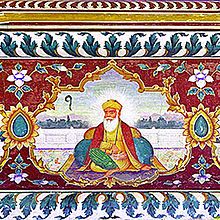No products
Religious Art
- Pocket & Wrist Watches
- Music Instruments
- Brass Band & Woodwinds
- Ethnic Indian Instruments
- Guitars, Mandolins & Strings
- Violin, Viola & Cello Fittings
- World Percussion
- Nautical Brass
- Collectible Damascened Knives
New products
-

Special Quality Fiberglass Flight Case for Indian SANTOOR Special Locks, Trolley Wheels, Ultra Rugged
Fiberglass Flight Case Special Locking System Trolley Wheels Top...
$ 517.53 -

Special Quality Fiberglass Flight Case for Indian SARANGI. Special Locks, Trolley Wheels, Ultra Rugged
Fiberglass Flight Case Special Locking System Trolley Wheels Top...
$ 415.65 -

Special Quality Fiberglass Flight Case for Portable Scale Changer Harmonium. Special Locks, Trolley Wheels, Ultra Rugged
Fiberglass Flight Case Special Locking System Trolley Wheels Top...
$ 444.18 -

Special Quality Fiberglass Flight Case for Indian Single Tumba Munda Size Double Tumba Sitar. Special Locks, Trolley Wheels, Ultra Rugged
Fiberglass Flight Case Special Locking System Trolley Wheels Top...
$ 484.93 -

Special Quality Fiberglass Flight Case for Indian ESRAJ / ISRAJ / DILRUBA. Special Locks, Trolley Wheels, Ultra Rugged
Fiberglass Flight Case Special Locking System Trolley Wheels Top...
$ 427.88
Guru Nanak Blessing, Beautiful Tribute Sikhism Devotional Wrist Watch
REL-020
New product
- impressive 40 mm solid brass casing with stainless steel back
- premium 2040 quartz movement.
- original parchment art acrylic dial
- waterproof bracelet with brass buckle
- 1 year warranty
More info
Teachings
Guru Nanak’s teachings can be found in the Sikh scripture Guru Granth Sahib, as a vast collection of revelatory verses recorded in Gurmukhi.
From these some common principles seem discernible. Firstly a supreme Godhead who although incomprehensible, manifests in all major religions, the Singular "Doer" and formless. It is described as the indestructible (undying) form.
Nanak describes the dangers of egotism (haumai- "I am") and calls upon devotees to engage in worship through the word of God. Naam, implies God, the Reality, mystical word or formula to recite or meditate upon (shabad in Gurbani), divine order (hukam) and at places divine teacher (guru) and guru’s instructions)[16] and singing of God’s qualities, discarding doubt in the process. However, such worship must be selfless (sewa). The word of God, cleanses the individual to make such worship possible. This is related to the revelation that God is the Doer and without God there is no other. Nanak warned against hypocrisy and falsehood saying that these are pervasive in humanity and that religious actions can also be in vain. It may also be said that ascetic practices are disfavoured by Nanak, who suggests remaining inwardly detached whilst living as a householder.
Through popular tradition, Nanak’s teaching is understood to be practised in three ways:
- Vaṇḍ Chakkō: Sharing with others, helping those with less who are in need
- Kirat Karō: Earning/making a living honestly, without exploitation or fraud
- Naam Japna: Meditating on God's name to control your 5 evils to eliminate suffering and live a happy life.
Nanak put the greatest emphasis on the worship of the Word of God (Naam Japna).[16] One should follow the direction of awakened individuals (Gurmukh or God willed) rather than the mind (state of Manmukh- being led by self will)- the latter being perilous and leading only to frustration.
Reforms that occurred in the institution and both Godhead and Devotion, are seen as transcending any religious consideration or divide, as God is not separate from any individual.
Guru Nanak's Divine Journeys
Although the exact account of his itinerary is disputed, he is widely acknowledged to have made four major journeys, spanning thousands of kilometres, the first tour being east towards Bengal and Assam, the second south towards Sri Lanka, the third north towards Kashmir, Ladakh, and Tibet, and the final tour west towards Baghdad, Mecca and Medina on the Arabian Peninsula.
Nanak crossed into Arunachal Pradesh and visited most of the part. First while going to Lhasa (Tibet) he passed through Tawang after crossing from Bhutan and entered Tibet from Samdurang Chu. He returned from Lhasa and went to the famous monastery Samye and entered Pemoshubu Menchukha in Arunachal Pradesh. He meditated for some time at this location. From Menchukha he went back to Tibet, brought the residents of Southern Tibet and got them settled in Menchukha. Thereafter through Gelling and Tuiting he proceeded to Saidya and Braham-Kund, before entering the state of Assam again.
Nanak was moved by the plight of the people of world and wanted to tell them about the "real message of God". The people of the world were confused by the conflicting message given by priests, pundits, qazis, mullahs, etc. He was determined to bring his message to the masses; so in 1499, he decided to set out on his sacred mission to spread the holy message of peace and compassion to all of mankind.
Most of his journeys were made on foot with his companion Bhai Mardana. He travelled in all four directions - North, East, West and South. The founder Sikh Guru is believed to have travelled more than 28,000 km in five major tours of the world during the period from 1500 to 1524.
Nanak saw the world suffering out of hatred, fanaticism, falsehood and hypocrisy. The world had sunk in wickedness and sin. So he decided that he had to travel and educate and press home the message of Almighty Lord. So he set out in 1499 on his mission for the regeneration of humanity on this earth. He carried the torch of truth, heavenly love, peace and joy for mankind. For 1 year he spread his message of peace, compassion, righteousness and truth to the people in and around his home.
Then in 1500, he embarked on his Divine Mission and went towards east, west, north and south and visited various centers of Hindus, Muslims, Buddhists, Jainis, Sufis, Yogis and Sidhas. He met people of different religions, tribes, cultures and races. He travelled on foot with his Muslim companion named Bhai Mardana, a minstrel. His travels are called Udasis. In his first Udasi (travel), Nanak covered east of India and returned home after spending about 6 years. He started from Sultanpur in 1500 and went to his village Talwandi to meet and inform his parents about his long journey. His parents wanted their young son to provide comfort and protection for them in their old age and so they told him they would prefer it if he did not go. But he told them that the world was burning in the fire of Kalyug and that thousands and thousands were waiting for the Divine message of the Almighty for comfort, love and salvation. The Guru, therefore, told his parents, "There is a call from Heaven, I must go whither He directs me to go." Upon hearing these words, his parents agreed and gave their blessings. So Nanak started his mission and the roots of Sikhism were laid down first towards the east of India.
According to the Puratan Janamsakhi, which is one of the oldest accounts of the life history of Guru Nanak, the Guru undertook five missionary journeys (udasiya) to the far away places of Ceylon (Sri Lanka), Mecca, Baghdad, Kamroop (Assam), Tashkand and many more. Guru ji travelled far and wide to spread the word of Gurbani and covered most of India, present day Bangladesh, Pakistan, Tibet, Nepal, Bhutan, South West China, Afghanistan, Iran, Iraq, Saudi Arabia, Egypt, Israel, Jordan, Syria, Kazakhstan, Turkmenistan, Uzbekistan, Tajikistan, and Kyrgyzstan.
Reviews
No customer reviews for the moment.






